Citadel Contrast is a controversial product: some love it, others don’t get it. But one thing can be said: they have started a trend – the “one coat painting solution”. The Army Painter will soon release Speedpaints, and last year Scale75 funded their one coat paint via Kickstarter. In this review, we find out if Scale75 Instant Colors can compete with Contrast, and what the differences are between the two products.
The Instant Color range was realised via Kickstarter in 2020 by Scale75, a scale model and miniature paint company from Spain. The Kickstarter has shipped at the end of last year and individual products are out in retail by now. The range comprises 48 colours in 17 ml dropper bottles, a 60 ml acrylic medium, three primers available in 60 ml bottles for airbrushing, as well as 150 ml and 400 ml spray cans (though I haven’t seen those in the wild yet. There are also multiple paint sets to choose from. Similar to Citadel Contrast, the paints are designed to be a one-coat painting solution that creates basecoat, shading and highlights with a single application.
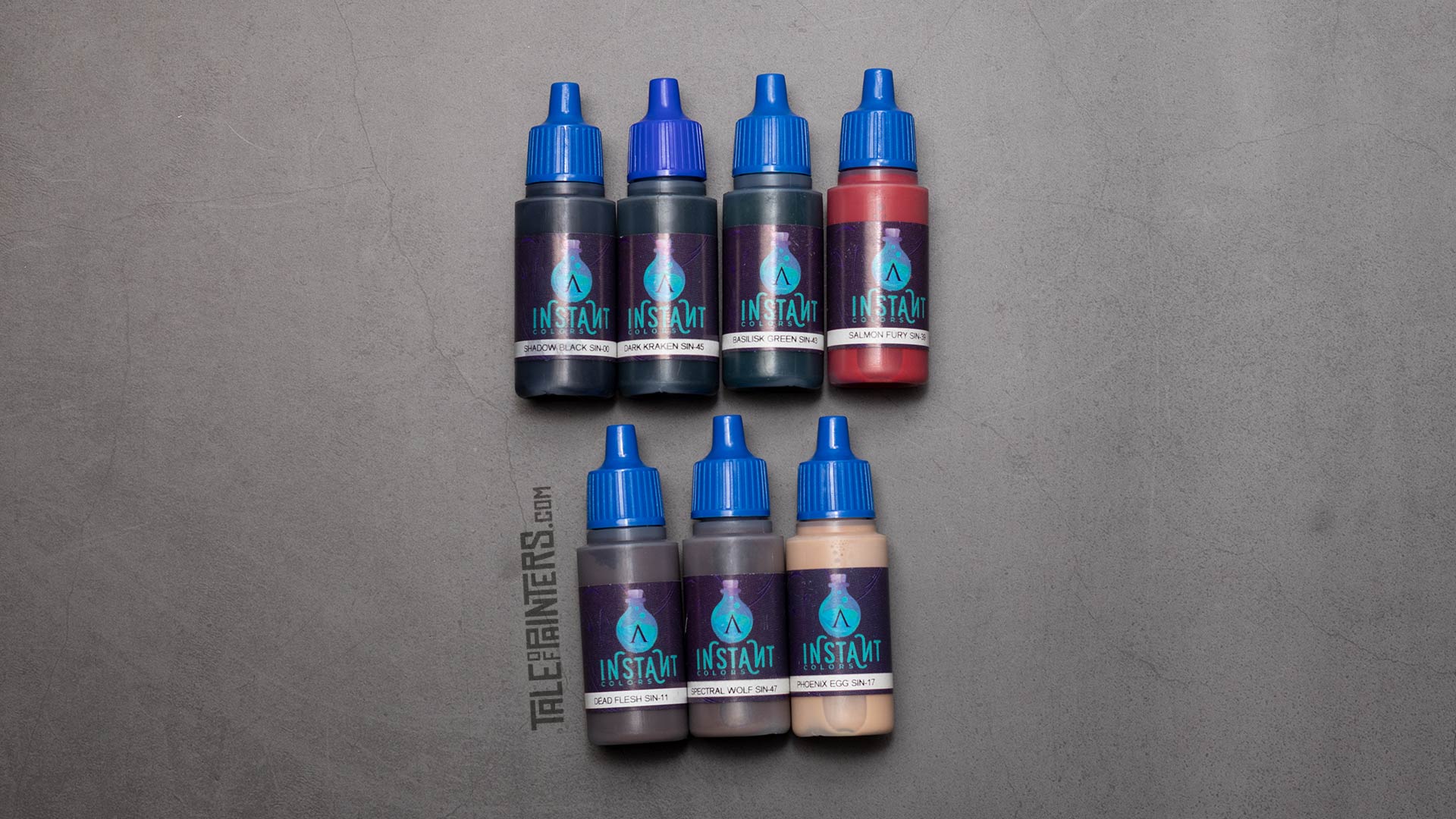

Features
The first thing to notice is that Instant Colors have a few more colours to choose from, 48 in total as compared to Citadel Contrast’s 34. You’ll find all the primary colours in different hues, as well as brown, grey and black Instant paints, but also a lot of muted and tertiary colours such as different shades of petrol, purple, and olive.
The paints come in 17 ml bottles (1 ml less than Contrast) with included agitator balls to improve blending, and a welcome dropper cap. As with all Scale75 paints, you need to punch the dropper canal with a pointed tool before the paint can be released.
Here is an overview and comparison of all 48 colours and in which paint set they can be found:
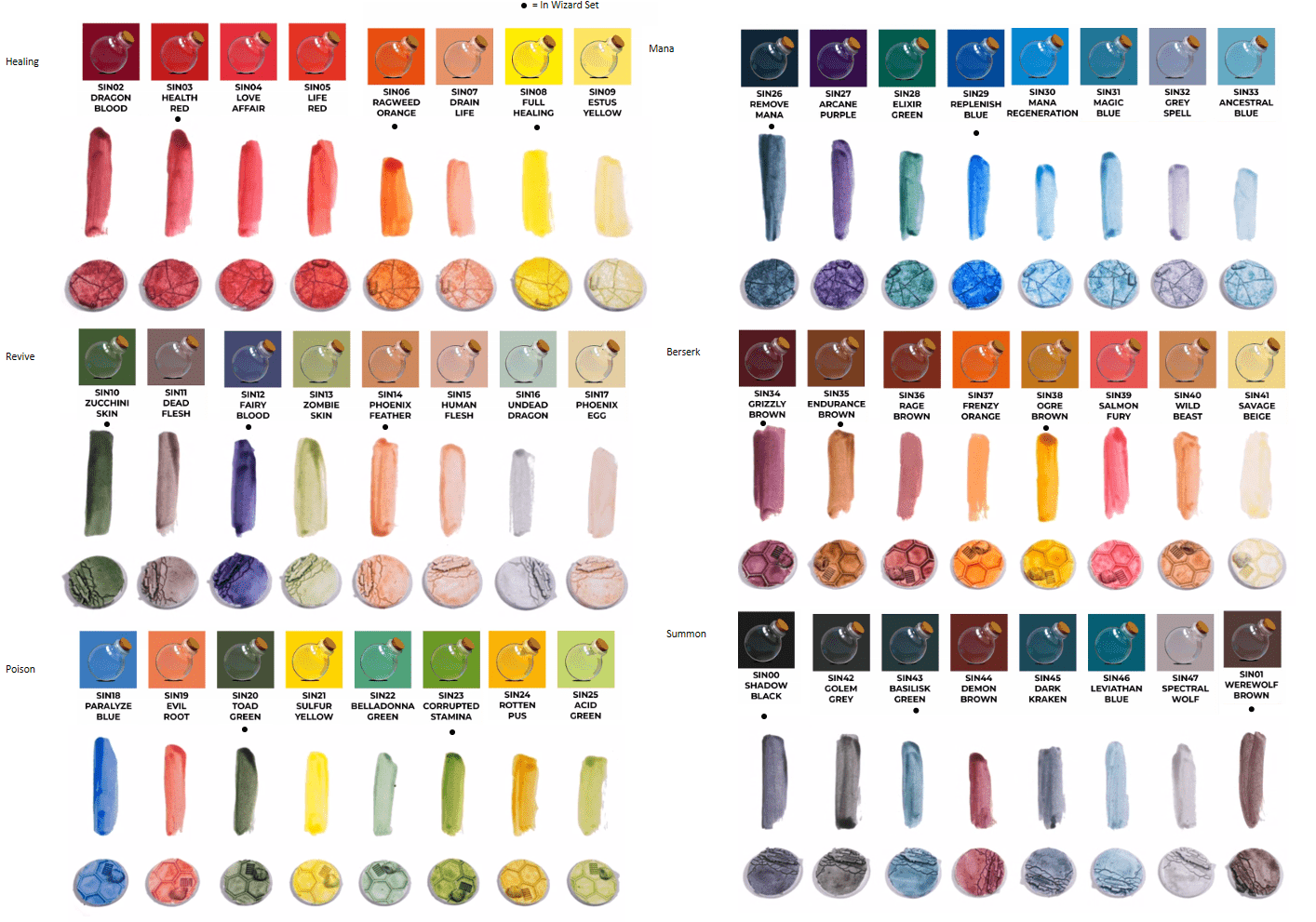

When working with Instant Colors, I immediately noticed the similarities with Citadel Contrast, but also the differences. Both paints have a hard time with flat surfaces like power armour and dry quite blotchy without further thinning. Consistency and pigmentation of Instant Colors are more comparable to Citadel Shades or Washes from The Army Painter’s Warpaints range though. A single coat of Instant Color is less intense than a Contrast Colour of a similar shade. Some colours, like Phoenix Egg, are so pale that you can barely see the effect over anything other than pure white.
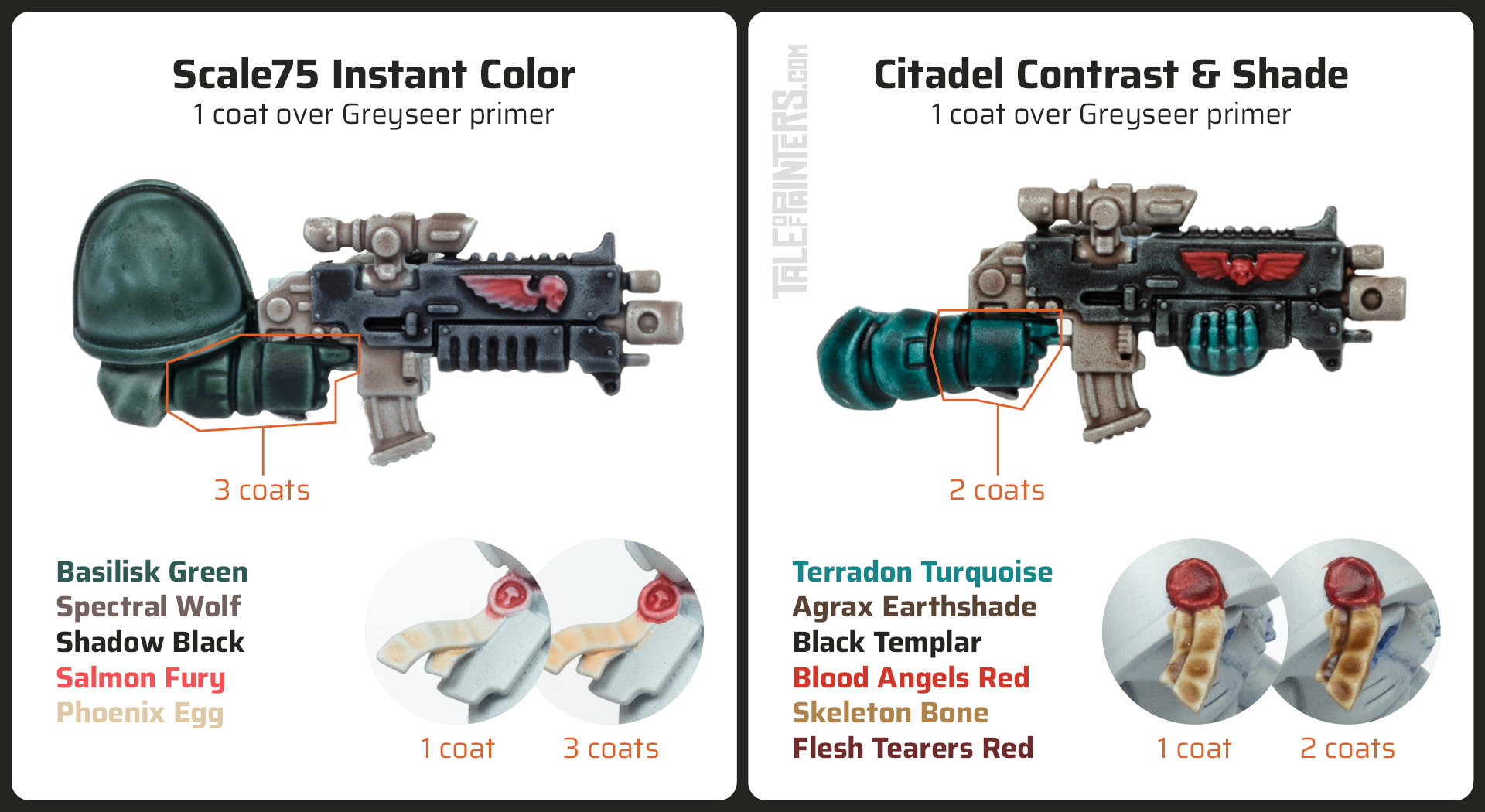

And there is a second difference. Unlike Contrast colours and Citadel Shades (and inks like Game Color Inks), Instant Colors are not based on a dying agent, but on thinned acrylic pigments. Similar to Nihilakh Oxide or the Antithesis paints by Warcolour, they behave more like highly diluted acrylic paints. So if you apply several layers of Instant Color, the result becomes more and more opaque, whereas Contrast and Shades become deeper and richer in colour with each application.
You can see the difference in the comparison image above. It’s most noticeable on the purity seals – multiple layers of Phoenix Egg and Salmon Fury make the colours more opaque, while additional layers of Contrast make the shading darker. A side effect of Instant Color’s opacity is that with several applications blotchy areas on smooth surfaces are reduced, while with Contrast the staining often becomes more pronounced, see the Space Marine’s glove.
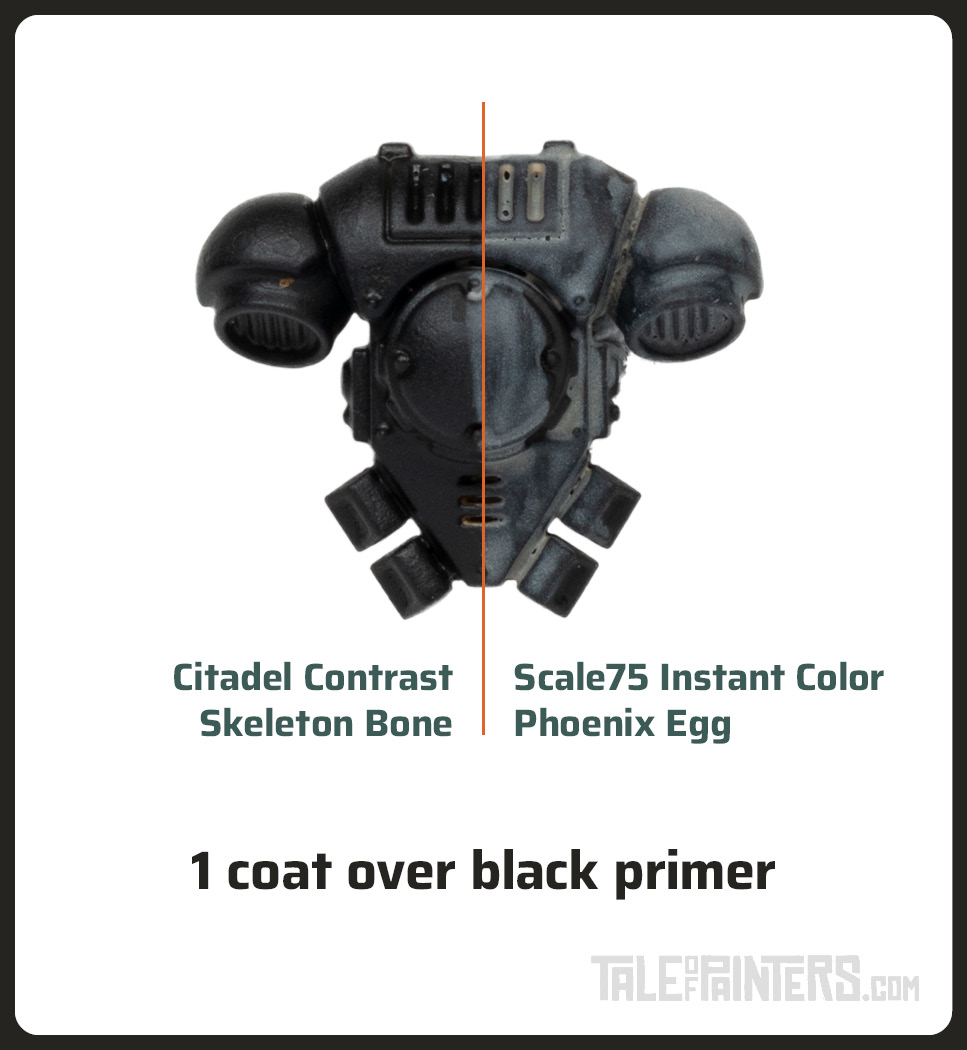

Instant Colors also have a special feature: they work on dark primers and basecoats, unlike Contrast and Shades, which just make a dark basecoat even darker. The pigments will gather and settle in the recesses, drying opaque, which can come in handy for creating rust and dirt, and even some basic glow effects. Think of Technical paint Nihilakh Oxide, which has a quite similar formula as Instant Colors.
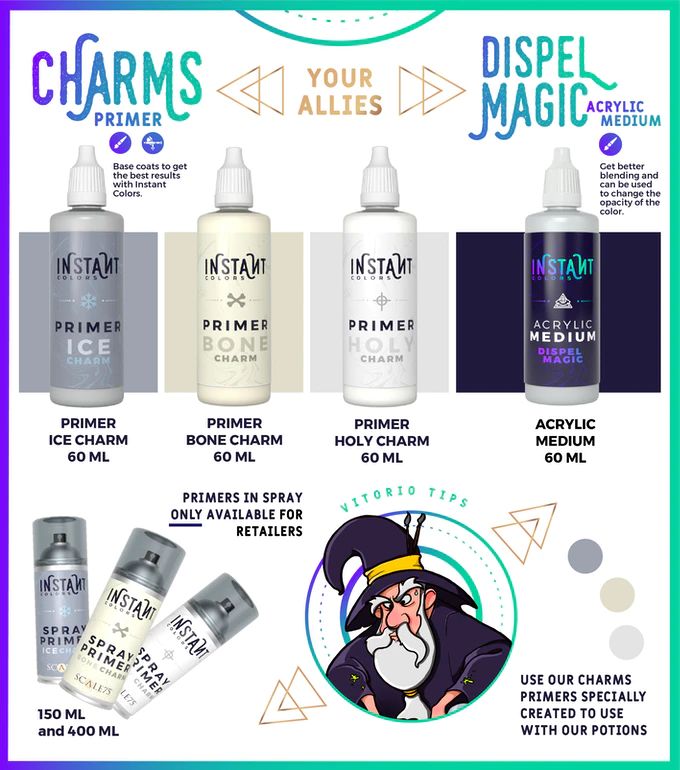

There are also special Instant Colour primers that are supposed to create more even results by improving the surface tension due to their smooth, satin-like finish. There is Holy Charm, a white primer, Bone Charm, a light bone-coloured primer (similar to Wraithbone), and Ice Charm, a light grey primer (similar to Greyseer). The primers are available in 60 ml bottles for airbrushing. Apparently, 150 ml and 400 ml spray cans are also planned, but I have not been able to find these anywhere yet. I have not yet been able to test the primers, nor the Dispel Magic Acryl Medium, which is probably Scale75’s answer to Contrast Medium.
Value
With a recommended retail price of €3.90 for 17 ml, the single colours of Instant Colors are significantly cheaper than Citadel Contrast, which has an RRP of €6.30 for 18ml. There are also several paint sets with 8 colours each with a recommended retail price of 24,79 Euro (3,09 Euro per colour).
If you compare the price with washes like the Citadel Shades (24 ml for 6.30 euros) or the washes from The Army Painter (18 ml for 3.20 euros), Instant Colors come off a little less well, but I still think the price is reasonable.
7.0Score
Pros
- 48 colours to choose from
- A lot of muted and tertiary colours you won't find anywhere else
- Pigment based formula allows for interesting effects, like glazing or washing over dark primers and basecoats
Cons
- Opacity and consistency feels more like washes
- Not as intense as Contrast in one coat application
- Some colours are so pale that they only work on pure white
Final Verdict
It is not easy to pass judgement on Instant Colors. As a "one coat painting solution" Contrast simply works better. If you are looking for something that comes as close as possible to Contrast, you will have to wait for the Speedpaints from The Army Painter. Still, I'm going to expand my Instant Color collection. They work great as washes or glazes, and if you apply several coats, you can achieve interesting effects thanks to their pigment-based formula. I also particularly like the very unique colour palette with the many muted and tertiary hues. Still, I can only give them 7.5 points overall, simply because they don't deliver 100% on their promise.







